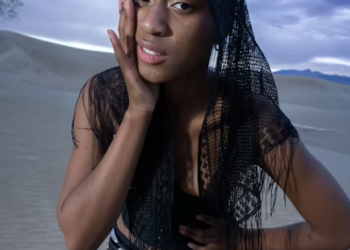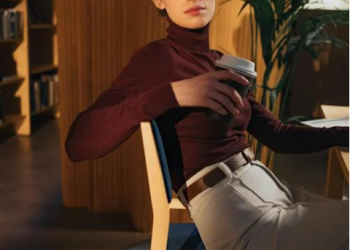Introduction
In the world of fashion, mastering the art of contrast is key to creating dynamic and visually engaging outfits. One powerful way to achieve contrast is by playing with textures. By mixing different textures, you can add depth and dimension to your look, elevating your style to new heights. In this guide, we’ll explore the power of contrast and how to effectively incorporate textures into your outfits for maximum impact.
Understanding Textures
Textures refer to the surface quality of fabrics and materials, ranging from smooth and sleek to rough and tactile. Understanding the different types of textures and how they interact with each other is essential for creating visually appealing outfits. From soft knits and plush velvet to sleek leather and crisp denim, textures play a crucial role in defining the look and feel of your clothing.
Creating Contrast with Textures
Contrast is the key to making a statement with your outfit. By juxtaposing different textures, you can create interesting visual contrasts that draw attention and add intrigue to your look. Whether it’s pairing a chunky knit sweater with a sleek leather skirt or layering a delicate lace blouse under a structured blazer, mixing textures allows you to create outfits that are both visually striking and stylishly sophisticated.
Texture Pairing Techniques
When it comes to mixing textures, there are several techniques you can use to create dynamic and harmonious outfits. Experiment with combining contrasting textures, such as pairing a fuzzy faux fur coat with smooth satin trousers or layering a sheer chiffon top over a chunky knit sweater. Additionally, consider layering textures for added depth and dimension—for example, layering a leather jacket over a silk blouse or accessorizing with a mix of metal and fabric textures.
Texture and Seasonal Fashion
Textures play a significant role in seasonal fashion, with certain textures being more suitable for specific seasons. In the colder months, embrace cozy knitwear, plush velvet, and soft cashmere to stay warm and stylish. In contrast, lightweight fabrics like linen and cotton are perfect for summer, offering breathability and comfort in hot weather. Consider practical considerations such as weather when selecting textures for your outfits.
Texture and Occasion
Texture choices can also vary depending on the occasion. For formal events, opt for luxe textures like satin, silk, and velvet to add a touch of elegance to your look. For casual outings, embrace more relaxed textures like denim, cotton, and knitwear for a laid-back yet stylish vibe. Balancing textures is key to creating outfits that are appropriate for different settings while still making a statement.
Celebrity Inspiration
Celebrities are known for their impeccable sense of style, and many utilize textures to create memorable outfits. Take inspiration from style icons like Blake Lively, who effortlessly combines different textures to create fashion-forward looks. Whether it’s pairing a sequined top with distressed denim or mixing leather and lace, celebrities demonstrate the power of texture in elevating their style.
Accessorizing with Textures
Accessories offer another opportunity to incorporate texture into your outfits. From tactile handbags and statement jewelry to textured scarves and hats, accessories can add depth and dimension to your look. Experiment with mixing different textures in your accessories to add interest and personality to your outfit.
Budget-Friendly Texture Mixing
You don’t need to break the bank to experiment with texture mixing. Look for affordable textured pieces at thrift stores, consignment shops, and online retailers. Additionally, consider DIY techniques such as fabric painting, embroidery, and fabric manipulation to add texture to your existing wardrobe pieces.
Conclusion
Textures are a powerful tool for creating contrast and visual interest in your outfits. By understanding the principles of texture mixing and experimenting with different combinations, you can create dynamic and stylish looks that turn heads and make a lasting impression. So don’t be afraid to play with textures and embrace the power of contrast in your fashion choices.

FAQs
- How do I know which textures work well together?
- Experimentation is key to finding texture combinations that work for you. Start by pairing contrasting textures, such as smooth and rough or shiny and matte, and see what feels visually appealing.
- Can I mix textures in formal outfits?
- Absolutely! Mixing textures can add depth and dimension to formal outfits, making them more visually interesting. Consider pairing luxe fabrics like silk and velvet with more structured materials like leather or tweed for a sophisticated look.
- What are some common mistakes to avoid when mixing textures?
- One common mistake is overdoing it with too many textures in one outfit. Instead, focus on balancing textures and selecting a few key pieces that complement each other. Additionally, be mindful of proportions and how different textures interact with each other.
- Are there specific textures that are more suitable for certain body types?
- Certain textures can create visual illusions that flatter different body types. For example, soft, flowing fabrics like chiffon and silk can be flattering for curvier figures, while structured fabrics like denim and tweed can add definition to straighter body types.
- How can I add texture to my outfit without overdoing it?
- Start by incorporating subtle textured accents, such as a textured scarf or a woven belt, into your outfit. These small touches add interest without overwhelming the overall look. Additionally, consider layering different textures to create depth and dimension without going overboard.






